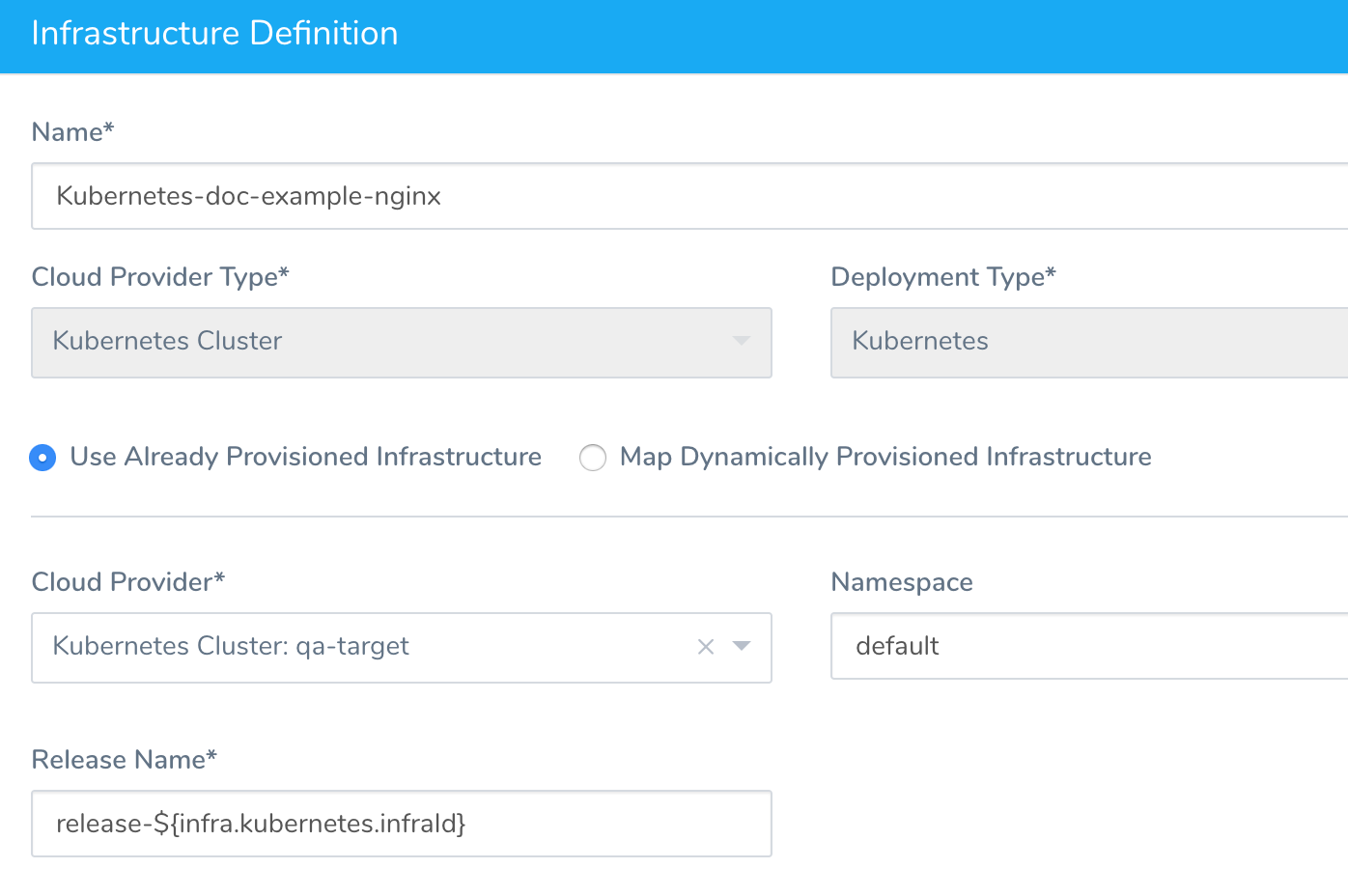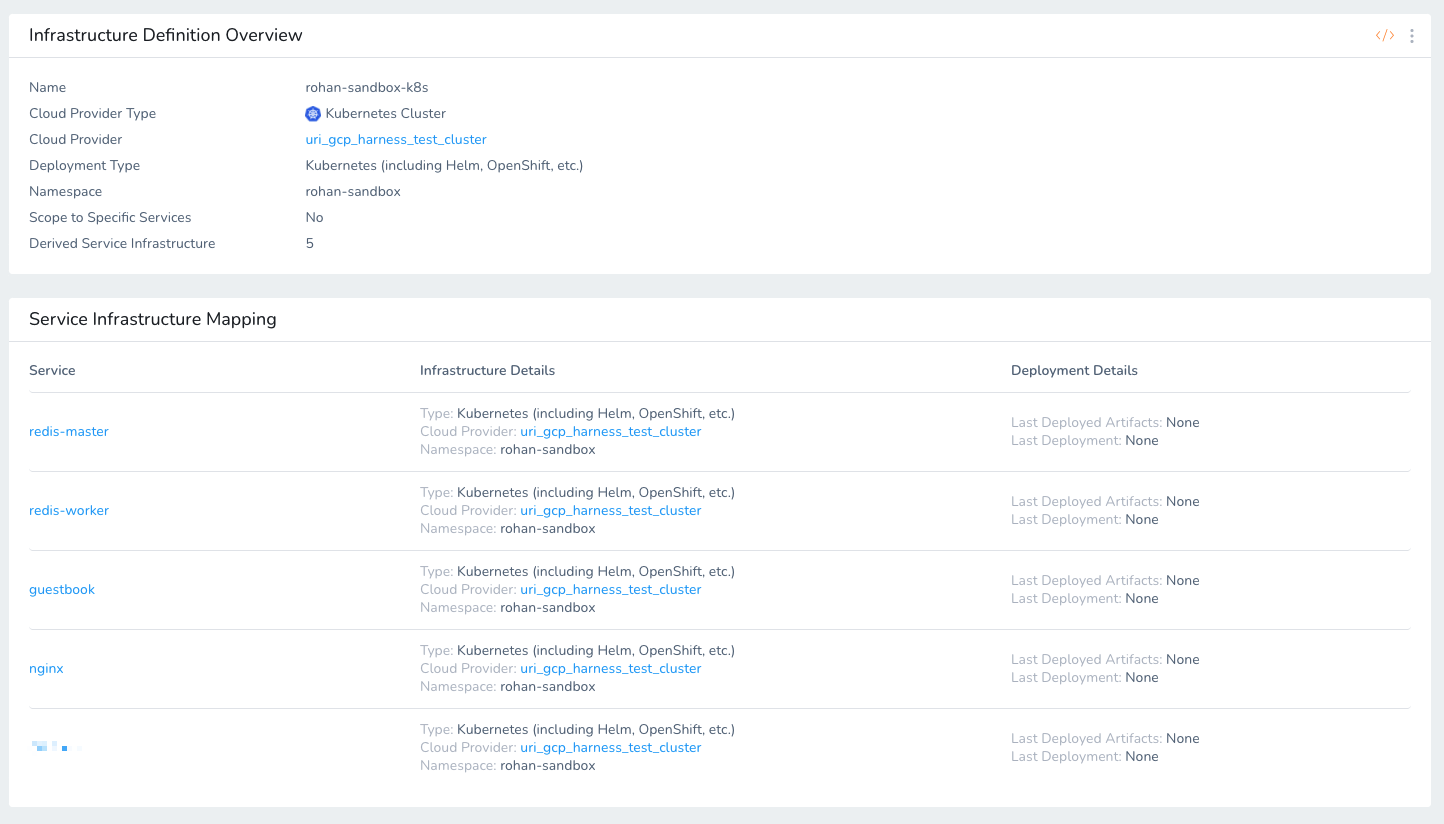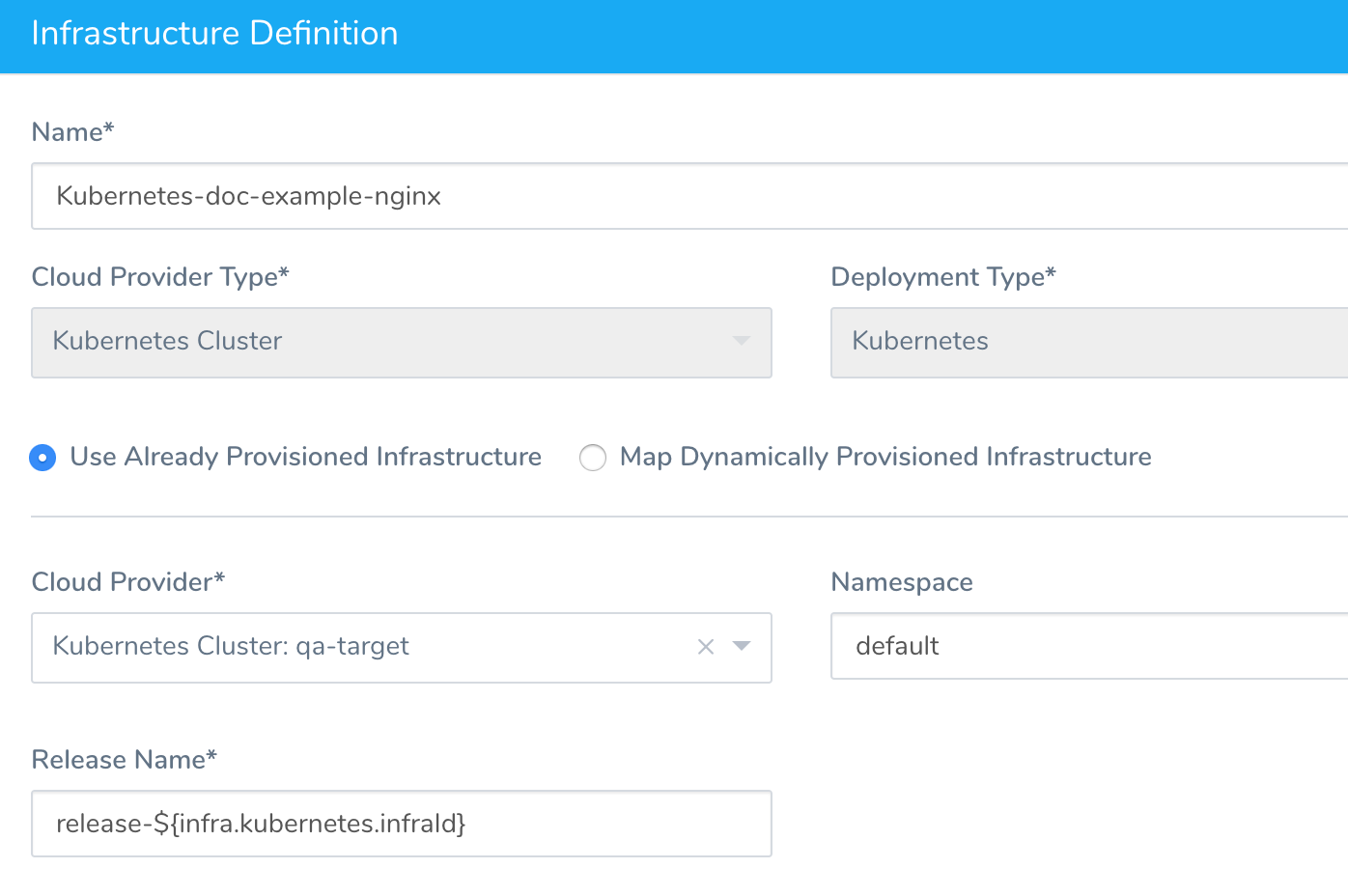Kubernetes Versioning and Annotations
This topic covers how Harness tracks Kubernetes deployment releases, and the labels Harness applies during deployments:
For a list of Harness built-in expressions, see Built-in Variables List.
Releases and Versioning
Every Harness deployment creates a new release with an incrementally increasing number. Release history is stored in the Kubernetes cluster in a ConfigMap. This ConfigMap is essential for release tracking, versioning and rollback.
By default, all the ConfigMap and Secrets resources are versioned by Harness. Corresponding references in PodSpec are also updated with versions.
You can see the use of release numbers and versioning in the Deployments page details:
INFO 2019-02-15 10:53:33 Kind Name Versioned
INFO 2019-02-15 10:53:33 Namespace default false
INFO 2019-02-15 10:53:33 Secret image-pull-secret false
INFO 2019-02-15 10:53:33 Secret sample true
INFO 2019-02-15 10:53:33 Deployment nginx-deployment false
INFO 2019-02-15 10:53:33
INFO 2019-02-15 10:53:33
INFO 2019-02-15 10:53:33 Current release number is: 5
INFO 2019-02-15 10:53:33
INFO 2019-02-15 10:53:33 Previous Successful Release is 4
Versioning does not change how you use Secrets. You do not need to reference versions when using Secrets.
For cases where versioning is not required, the manifest entered in the Harness Service Manifests section should be annotated with harness.io/skip-versioning: "true".
For example. you might want to skip versioning is for an ImagePullSecret because it never changes, or for TLS certs if they are referred to in Kubernetes container command args.
Harness also uses a release name for tracking releases. You can supply a release name in an Environment's Infrastructure Definition Release Name field. By default, the value Harness uses is release-${infra.kubernetes.infraId}.
 The
The ${infra.kubernetes.infraId} expression is a unique identifier that identifies the combination of Service and Infrastructure Definition.
In the Infrastructure Definition Service Infrastructure Mapping below each listing has a unique identifier that can be referenced using ${infra.kubernetes.infraId}:
 For a list of Harness built-in expressions, see Built-in Variables List. See the Infrastructure and Kubernetes sections.
For a list of Harness built-in expressions, see Built-in Variables List. See the Infrastructure and Kubernetes sections.
Release Name is Reserved for Internal Harness ConfigMap
The release name you enter in Release Name is reserved for the internal Harness ConfigMap used for tracking the deployment.
Do not create a ConfigMap that uses the same name as the release name. Your ConfigMap will override the Harness internal ConfigMap and cause a NullPointerException.
Skipping Versioning and Rollback
Skipping versioning (using harness.io/skip-versioning: "true") effects rollback.
For example, if your Kubernetes Deployment object referred to v1 of the configMap and then you deploy the Deployment along with config changes in the configMap resulting in a v2 configMap, and the deployment then fails:
- With versioning: the rollback of the deployment goes back to a version that refers to v1, effectively reverting your config changes.
- Without versioning: rollback of deployment goes to its previous revision (reverting buildNo, or other deployment information), but the reference to configMap is to a non-versioned one. The configMap was overwritten, so it now refers to the new config. If the configMap change caused the failure then rollback will also fail.
Harness Annotations and Labels
Harness applies labels during Kubernetes deployment that you can use to select objects you defined in your Harness Service Manifests section. Annotations are a way to pass additional metadata for resources to Harness. For a description of Annotations, see Annotations from Kubernetes.
Quotes
In both annotations and labels, boolean strings require quotes. For example:
harness.io/skip-versioning: "true"
Regular strings do not requires quotes.
Annotations
The following Annotations can be put on resource specifications in the Harness Service Manifests section.
Annotation values must use quotes.
| Annotation | Value | Usage |
harness.io/skip-versioning | `"true" | "false"` |
harness.io/skip-file-for-deploy | n/a | You might have manifest files for resources that you do not want to deploy as part of the main deployment.Instead, you tell Harness to ignore these files and then apply them separately using the Harness Apply step.Or you can simply ignore them until you wish to deploy them as part of the main deployment.Use harness.io/skip-file-for-deploy at the top of the manifest file to ignore its objects.See Ignore a Manifest File During Deployment. |
harness.io/direct-apply | `"true" | "false"` |
harness.io/primary-service | `"true" | "false"` |
harness.io/stage-service | `"true" | "false"` |
harness.io/managed | `"true" | "false"` |
Note on direct-apply
See What Can I Deploy in Kubernetes?.
Labels
The following labels are applied by Harness during deployment.
| Label | Value | Usage |
harness.io/release-name | release name | Applied on pods. Harness uses a release name for tracking releases, rollback, etc. You can supply a release name in an Environment's Infrastructure Definition Release Name field. By default, the value Harness uses is release-${infra.kubernetes.infraId}. Use release-${infra.kubernetes.infraId} for the Release Name instead of just ${infra.kubernetes.infraId}. Kubernetes service and pod names follow DNS-1035 and must consist of lowercase alphanumeric characters or '-', start with an alphabetic character, and end with an alphanumeric character. Using release- as a prefix will prevent any issues. |
harness.io/track | `canary | stable` |
harness.io/color | `blue | green` |